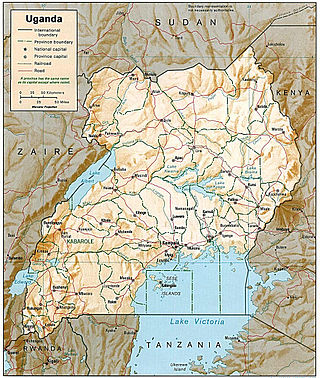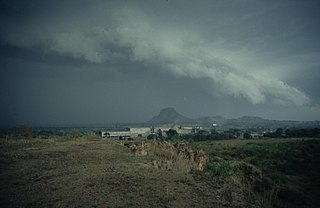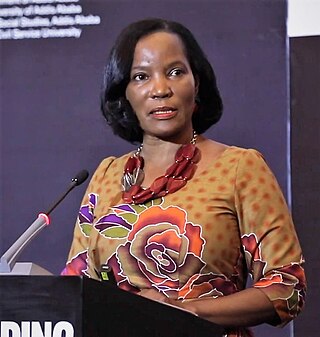Related Research Articles

Transport in Uganda refers to the transportation structure in Uganda. The country has an extensive network of paved and unpaved roads.

Tororo is a town in the Eastern Region of Uganda. It is the main municipal, administrative, and commercial center of Tororo District.

The Uganda Railways Corporation (URC) is the parastatal railway of Uganda. It was formed after the breakup of the East African Railways Corporation (EARC) in 1977 when it took over the Ugandan part of the East African railways.

Rift Valley Railways (RVR) was a consortium established to manage the parastatal railways of Kenya and Uganda. The consortium won the bid for private management of the century-old Uganda Railway in 2005. The Kenya-Uganda railway had previously been run by the East African Railways and Harbours Corporation over the period 1948–77. In 2014, RVR moved 1,334 million net tonne kilometers of rail freight, up from 1,185 million net tonne kilometers the previous year. Both Kenya and Uganda terminated their contracts with RVR in mid-2017, with control of their national rail networks reverting to the Kenya Railways Corporation and the Uganda Railways Corporation, respectively.

Burning of renewable resources provides approximately 90 percent of the energy in Uganda, though the government is attempting to become energy self-sufficient. While much of the hydroelectric potential of the country is untapped, the government decision to expedite the creation of domestic petroleum capacity coupled with the discovery of large petroleum reserves holds the promise of a significant change in Uganda's status as an energy-importing country.
Cipla Quality Chemical Industries Limited (CiplaQCIL) is a pharmaceutical manufacturing company in Uganda. According to a 2007 published report, it was the only company in Africa that manufactured triple-combination antiretroviral (ARV) drugs. CiplaQCIL also manufactures the antimalarial drug Lumartem, containing artemisinin and lumefantrine, and the Hepatitis B generic medicines Texavir and Zentair.
Isimba Hydroelectric Power Station is a 183.2 megawatts (245,700 hp) hydroelectric power station commissioned on 21 March 2019 in Uganda. Construction of this dam began in April 2015 and was completed in January 2019. Commercial operations began on 21 March 2019.
Tororo Cement Limited (TCL), a Ugandan company, is one of the largest manufacturers of construction materials in East Africa.
Hima Cement Limited (HCL) is a cement manufacturer in Uganda. It is a subsidiary of the Holcim Group, a building materials manufacturer headquartered in Switzerland, with subsidiaries in over 80 countries.

Jennifer Semakula Musisi is a Ugandan lawyer and public administrator. She is the first City Leader in Residence at Bloomberg Harvard City Leadership Initiative at the Ash Center of the Harvard Kennedy School, in Cambridge, Massachusetts, United States. She was appointed to this position in January 2019.
Moroto Cement Limited (MCL), whose full name is Moroto Cement Industries Limited, is a manufacturer of cement in Uganda with approximately 3000 tonnes per day clinker capacity.
The Uganda Oil Refinery is a planned crude oil refinery in Kabaale village, on the Eastern shore of Lake Albert along the Hoima–Kaiso–Tonya Road, Buseruka Sub-county, Hoima District, Western Region, Uganda, near the international border with the Democratic Republic of the Congo. After 5 years of negotiations the Albertine Graben Refinery Consortium (AGRC) formed in 2018 and agreed to design and build the refinery.
The Uganda National Roads Authority (UNRA) is a government agency mandated to develop and maintain the national roads network, advise the government on general roads policy, contribute to the addressing of national transport concerns, and perform certain other functions. UNRA is charged with, among other things, the selection of contractors, the supervision of construction, the scheduling of maintenance, and the prioritization of national road works.
The Kampala–Jinja Expressway, also known as the Jinja–Kampala Expressway, is a proposed four-lane toll highway in Uganda, linking Kampala, the capital and largest city of Uganda, with the city of Jinja in the Eastern Region of Uganda.
The Kampala–Mpigi Expressway, also Busega–Mpigi Expressway, is a four-lane, dual carriage highway under construction in the Central Region of Uganda, connecting, Kampala, the capital city, and Mpigi, the headquarters of Mpigi District.
The Osukuru Thermal Power Station is a planned 12 MW (16,000 hp) chemical-fired thermal power plant in Uganda.
Simba Cement Uganda Limited (SCUL), also National Cement Company Uganda, is a cement manufacturer in Uganda. It is a subsidiary of National Cement Company Limited, the construction materials manufacturer based in Kenya. National Cement is itself a subsidiary of the Devki Group of Companies.
References
- 1 2 3 4 Odyek, John (17 October 2018). "Fertiliser factory to open in Tororo". New Vision . Kampala. Retrieved 23 October 2018.
- ↑ Asiimwe, Dicta (27 October 2017). "Tororo plant to supply homegrown fertiliser to East Africa". The EastAfrican . Nairobi. Retrieved 27 October 2017.
- ↑ Biryabarema, Elias (23 December 2014). "Chinese Firm To Build Fertiliser Plant In Uganda". Reuters. Archived from the original on 24 December 2014. Retrieved 31 May 2018.
- ↑ Musisi, Frederic (29 May 2018). "Will Shs2.2 trillion phosphate project turn around Uganda's fortunes?". Daily Monitor . Kampala. Retrieved 31 May 2018.
- ↑ Globefeed.com (31 May 2018). "Distance between Uganda Post Office, Kampala Road, Kampala, Uganda and Osukuru Hills, Uganda". Globefeed.com. Retrieved 31 May 2018.
- ↑ Google (31 May 2018). "Approximate Location of Osukuru Industrial Complex" (Map). Google Maps . Google. Retrieved 31 May 2018.
- 1 2 Kato, Ronald (24 April 2017). "Tororo phosphate project to create over 1,700 jobs". New Vision . Kampala. Retrieved 25 July 2018.
- 1 2 "Uganda To Open East Africa's Largest Organic Fertiliser Plant In KSh65 Billion Chinese Investment". Business Daily Africa Quoting Daily Monitor . Nairobi: Nation Media Group. 25 July 2018. Retrieved 25 July 2018.
- ↑ John Odyek, and Faustine Odeke (August 2014). "Extortionists Delayed Fertilizer Project - Museveni". New Vision Online . Kampala. Retrieved 31 August 2014.
- ↑ Tentena, Paul (24 August 2014). "New Phosphates Project for Uganda During 2016". East African Business Week . Kampala. Retrieved 31 August 2014.
- ↑ URN, Reporter (19 January 2007). "Large Phosphate Deposits Discovered In Tororo". Uganda Radio Network (URN). Retrieved 31 August 2014.
- ↑ Mutana, Mugarura (12 May 2010). "Government Wins Court Case To Resume Phosphate Mining". Uganda Radio Network (URN). Retrieved 31 August 2014.
- ↑ Gonza, Paul (25 February 2014). "Phosphate Mining To Start After Government Agrees With Residents". Daily Monitor . Kampala. Retrieved 31 August 2014.
- ↑ Kisige, Abou (20 September 2013). "Exploration of Sukulu Phosphates Starts". New Vision . kampala. Retrieved 31 August 2014.
- ↑ Odeke, Faustine (16 October 2015). "Construction of Uganda Sukulu phosphate factory kicks off". New Vision . Kampala. Retrieved 16 October 2015.
- ↑ Mugabe, David (5 February 2016). "Sukulu Phosphates signs $240 million funding". New Vision . Kampala. Retrieved 19 April 2016.
- ↑ Sadab Kitatta Kaaya (20 March 2018). "900 apply for Tororo phosphate firm's 92 jobs". The Observer (Uganda) . Kampala. Retrieved 20 March 2018.
- 1 2 Musisi, Frederic (13 August 2018). "Shs1 Trillion Spent On Osukuru Mining Project, Says Developer". Daily Monitor . Kampala. Retrieved 13 August 2018.
- ↑ Vision Reporter (24 October 2018). "President commissions Tororo Sukulu Phosphate Project". New Vision . Kampala. Retrieved 24 October 2018.
- ↑ Musisi, Frederic (13 November 2018). "Sukulu fertilisers set to hit stores soon". Daily Monitor . Kampala. Retrieved 13 November 2018.
